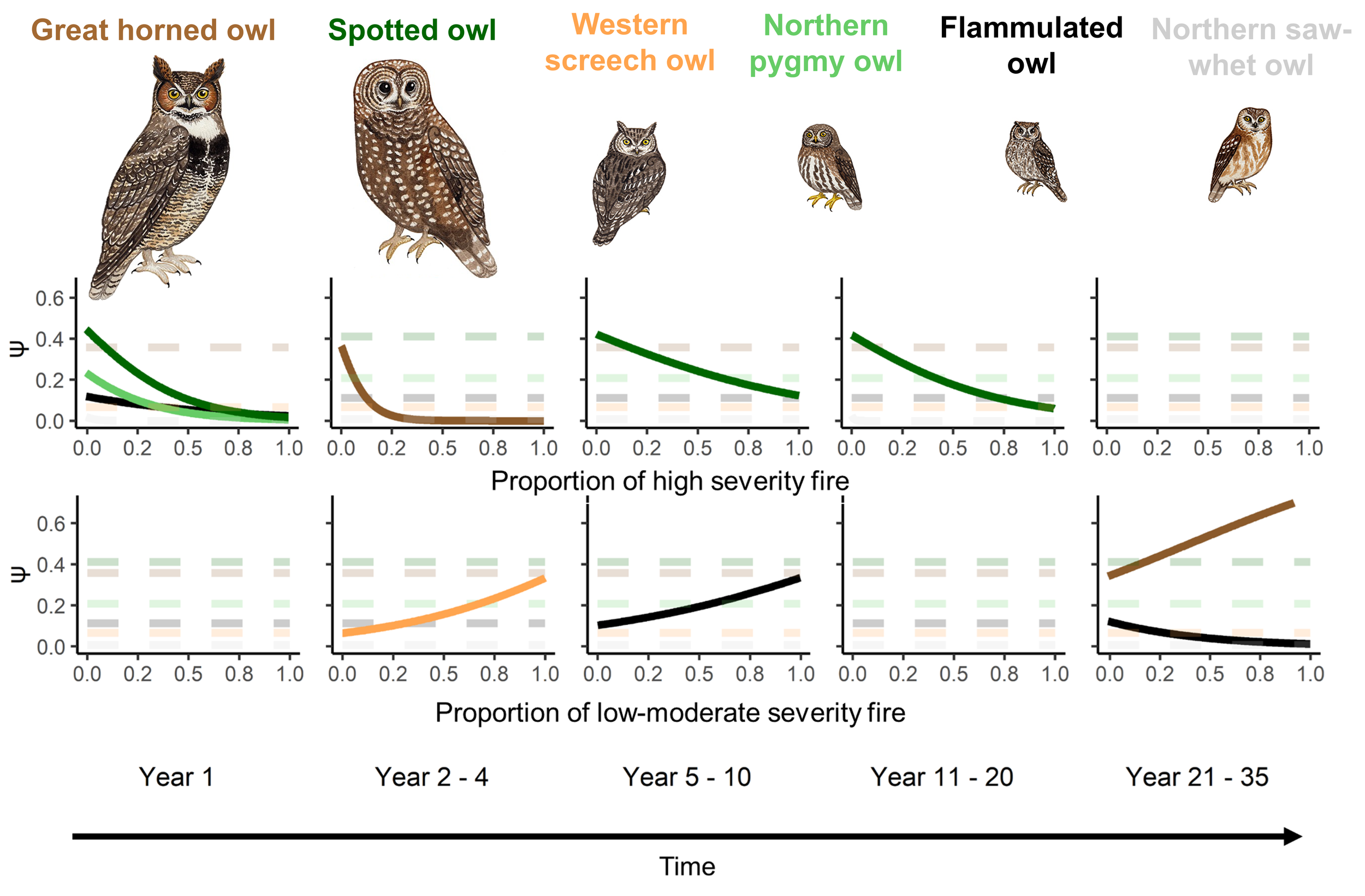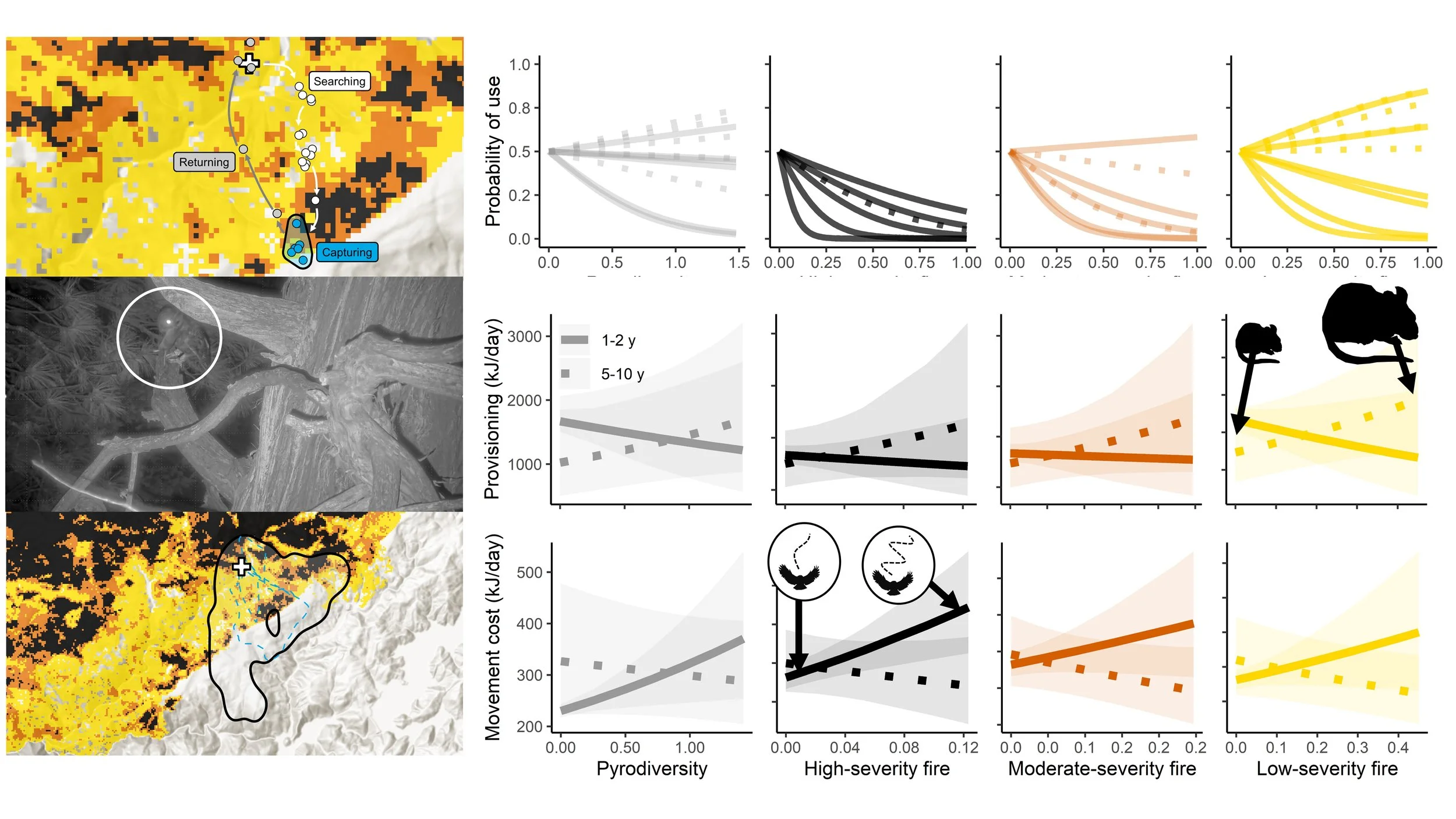Our projects are dynamic and continue to grow! We have included a few topics that summarize the through-lines of our ongoing research.
The effect of changing disturbance regimes on wildlife
Wildfire has been a fundamental component of natural ecosystem dynamics for millennia. However, climate change, fire suppression, and Colonial land use have produced larger, more severe, and/or more frequent fires that threaten a range of wildlife species. We use a variety of strategies, including species distribution modeling, bioacoustics, demography, GPS-tagging, and physiological experiments to better understand the impact of fire on individuals, populations, species, and communities. (all owl art by Kate Dolamore)
Climate change and anthropogenic land use are rapidly changing ecosystems across the globe. Much of what we know about wildlife responses to environmental change come from a few well studied species. However, conserving biodiversity requires additional consideration of rare and cryptic species. We partner with collaborators on a bioregional-scale passive acoustic monitoring project to study wildlife across the Sierra Nevada. We have developed numerous strategies to obtain acoustic detections of rare and cryptic nocturnal species from a massive acoustic dataset. With these data, we are learning more about the distribution of rare species and the impacts of changing disturbance regimes on their behaviors, demography, and distributions.
Monitoring cryptic animals using bioacoustics
Tracking the direct and indirect effects of climate change on vulnerable wildlife
Temperatures are rising globally and heat waves are becoming more frequent and extreme. These changes will likely have both direct and indirect effects on free-ranging wildlife. Forest animals can sometimes avoid the negative physiological consequences of heat waves by resting in stable microclimates created by tall trees and closed canopies. However, these structures are threatened by changing disturbance regimes (including predominantly high-severity wildfires and more extreme drought-and insect-related tree mortality). As climate events become more extreme and climate refugia become more sparse, the indirect effects of climate change may exacerbate the direct effects of climate change on vulnerable organisms. We use a combination of GPS-tracking, physiological investigations, and demography to quantify the effects of changing climatic conditions—including changing disturbance regimes—on individuals, populations, and communities.




